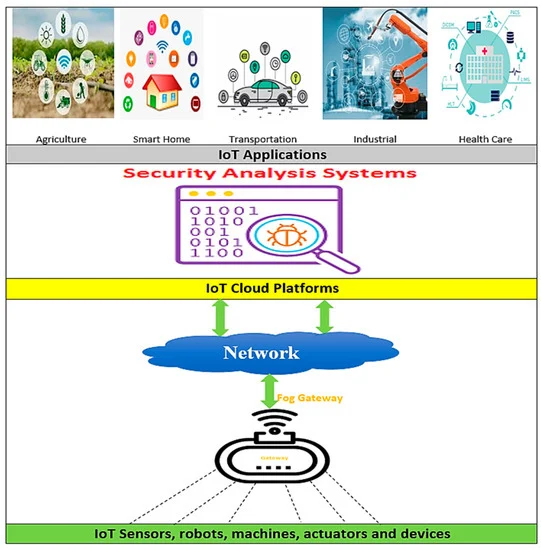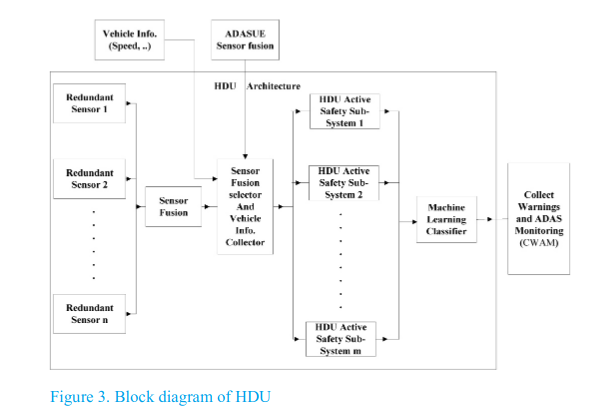Breadcrumb
Cloud computing privacy issues, challenges and solutions
There are many cloud computing initiatives that represent a lot of benefit to enterprise customers. However, there are a lot of challenges and concerns regarding the security and the privacy of the customer data that is hosted on the cloud. We explore in this paper the various aspects of cloud computing regarding data life cycle and its security and privacy challenges along with the devised methodology to address those challenges. We mention some of the regulations and law requirements in place to ensure cloud customer data privacy. © 2017 IEEE.

Segmented OTA Platform Over ICN Vehicular Networks
The Internet Protocol (IP) architecture could not fully satisfy the Vehicular Ad-hoc Networks (VANETs) needed efficiency, due to their dynamic topology and high mobility. This paper presents a technique that updates the software of Electronic Control Units (ECUs) in vehicles using segmented Over The Air (OTA) platform over Information-Centric Network (ICN) architecture. In VANET, the amount of time for active vehicles’ connectivity varies due to the vehicular network’s dynamic topologies. The importance of Flashing Over The Air (FOTA) has been illustrated as well as the impact of applying the
Simultaneous human detection and action recognition employing 2DPCA-HOG
In this paper a novel algorithm for Human detection and action recognition in videos is presented. The algorithm is based on Two-Dimensional Principal Components Analysis (2DPCA) applied to Histogram of Oriented Gradients (HOG). Due to simultaneous Human detection and action recognition employing the same algorithm, the computational complexity is reduced to a great deal. Experimental results applied to public datasets confirm these excellent properties compared to most recent methods. © 2011 IEEE.

HSAS-MD Analyzer: A Hybrid Security Analysis System Using Model-Checking Technique and Deep Learning for Malware Detection in IoT Apps
Established Internet of Things (IoT) platforms suffer from their inability to determine whether an IoT app is secure or not. A security analysis system (SAS) is a protective shield against any attack that breaks down data privacy and security. Its main task focuses on detecting malware and verifying app behavior. There are many SASs implemented in various IoT applications. Most of them build on utilizing static or dynamic analysis separately. However, the hybrid analysis is the best for obtaining accurate results. The SAS provides an effective outcome according to many criteria related to the
Arabic fake news detection using deep learning
Nowadays, an unprecedented number of users interact through social media platforms and generate a massive amount of content due to the explosion of online communication. However, because user-generated content is unregulated, it may contain offensive content such as fake news, insults, and harassment phrases. The identification of fake news and rumors and their dissemination on social media has become a critical requirement. They have adverse effects on users, businesses, enterprises, and even political regimes and governments. State of the art has tackled the English language for news and
Motion history of skeletal volumes and temporal change in bounding volume fusion for human action recognition
Human action recognition is an important area of research in computer vision. Its applications include surveillance systems, patient monitoring, human-computer interaction, just to name a few. Numerous techniques have been developed to solve this problem in 2D and 3D spaces. However 3D imaging gained a lot of interest nowadays. In this paper we propose a novel view-independent action recognition algorithm based on fusion between a global feature and a graph based feature. We used the motion history of skeleton volumes; we compute a skeleton for each volume and a motion history for each action
DiSGD: A distributed shared-nothing matrix factorization for large scale online recommender systems
With the web-scale data volumes and high velocity of generation rates, it has become crucial that the training process for recommender systems be a continuous process which is performed on live data, i.e., on data streams. In practice, such systems have to address three main requirements including the ability to adapt their trained model with each incoming data element, the ability to handle concept drifts and the ability to scale with the volume of the data. In principle, matrix factorization is one of the popular approaches to train a recommender model. Stochastic Gradient Descent (SGD) has

On Board Evaluation System for Advanced Driver Assistance Systems
The evaluation of Advanced Driver Assistance Systems (ADAS including driver assistance and active safety) has increasing interest from authorities, industry and academia. AsPeCSS active safety project concludes that good results in a laboratory test for active safety system design does not necessarily equate to an effective system in real traffic conditions. Moreover, many ADAS assessment projects and standards require physical testing on test tracks (dummy vehicles, pedestrian mannequins.), which are expensive and limit testing capabilities. This research presents a conceptual framework for
Face and gesture recognition for human computer interaction employing 2DHoG
Face and hand gesture recognition is one of the most challenging topics in computer vision. In this paper, a novel algorithm presenting a new 2D representation of histogram of oriented gradients is proposed, where each bin represents a range of angles dealt with in a separate layer employing 2DPCA. This method maintains the spatial relation between pixels which enhance the recognition accuracy. In addition it can be applied on either face or hand gesture images. Experimental results confirm excellent properties of the proposed algorithm and promotes it for real time applications © 2013 IEEE.
Traffic Analysis for Real Time Applications and its Effect on QoS in MANETs
Quality of Service (QoS) is one of the major challenges in Mobile Ad-hoc Networks (MANETs), due to their nature and special characteristics. QoS depends on different and multiple metrics such as routing protocols, route stability, channel rate quality, bandwidth, ... etc. Most of studies focus on the above metrics and some of them proposed enhancements. However, there are still unfilled gaps that need to be tackled. In this paper, we focus on the impact of QoS parameters on MANETs. The main objective is to identify the suitable applications in MANETs with respect to the network parameters. ©
Pagination
- Previous page ‹‹
- Page 15
- Next page ››
